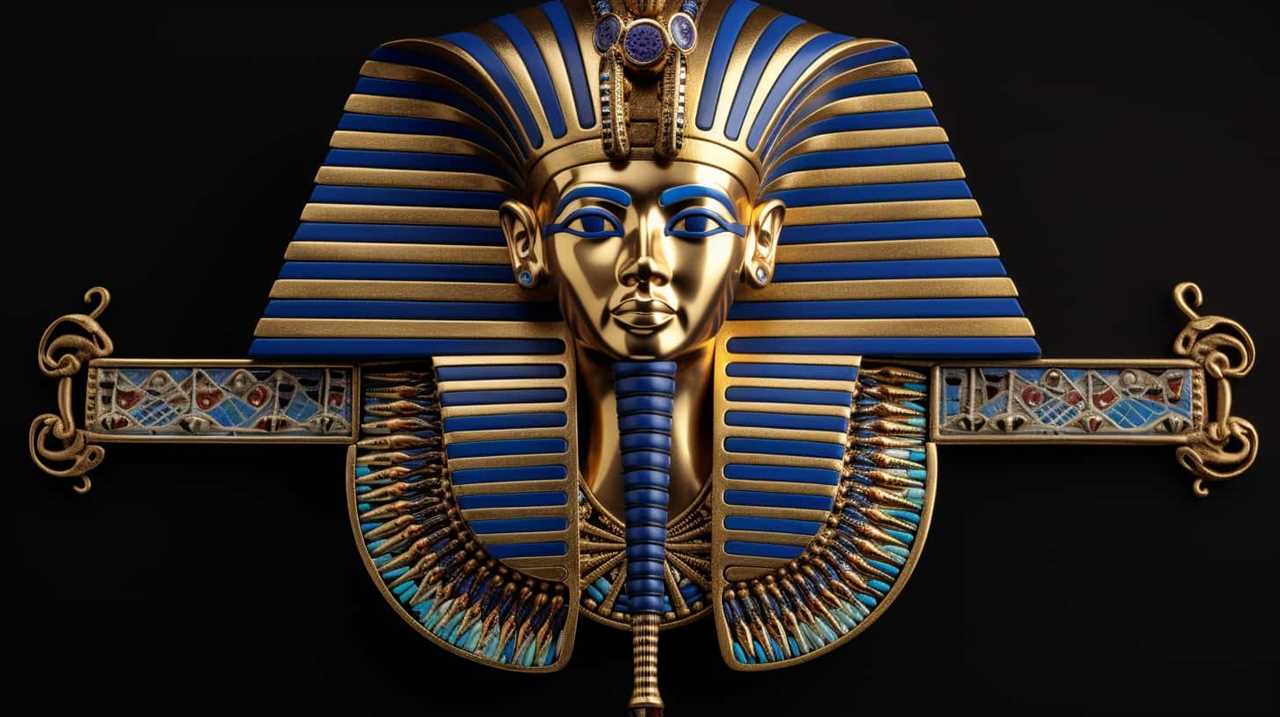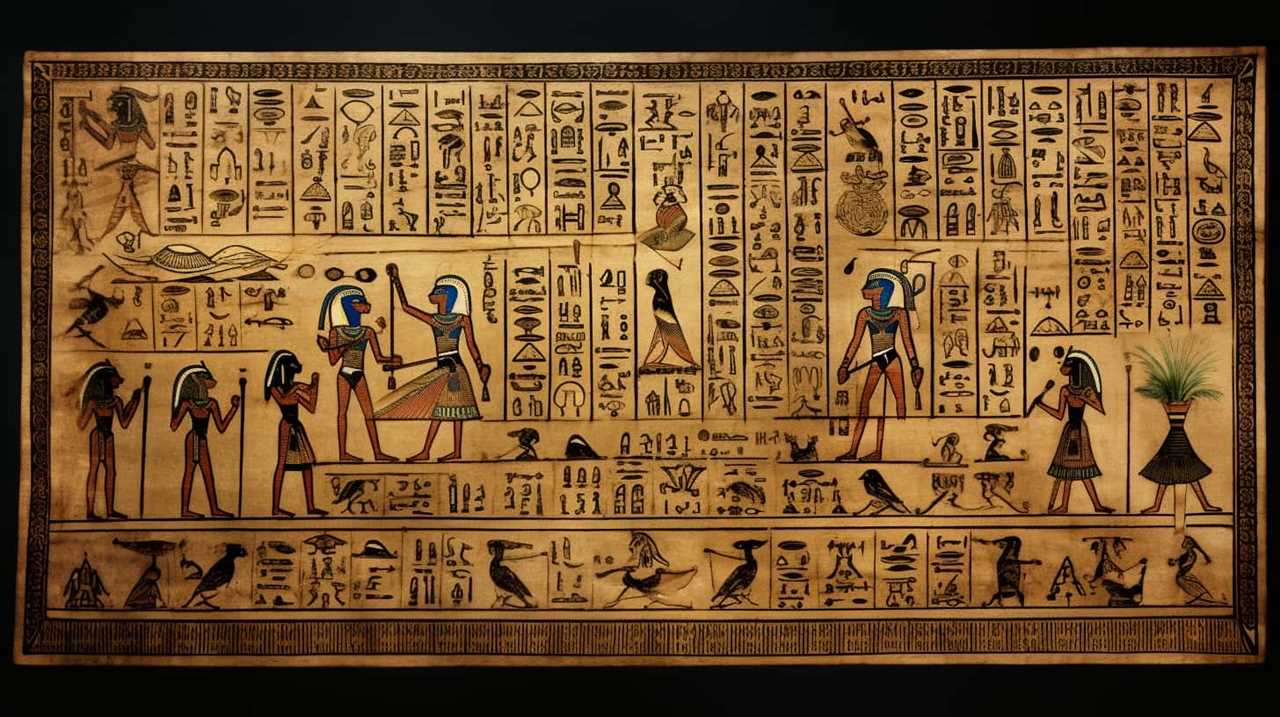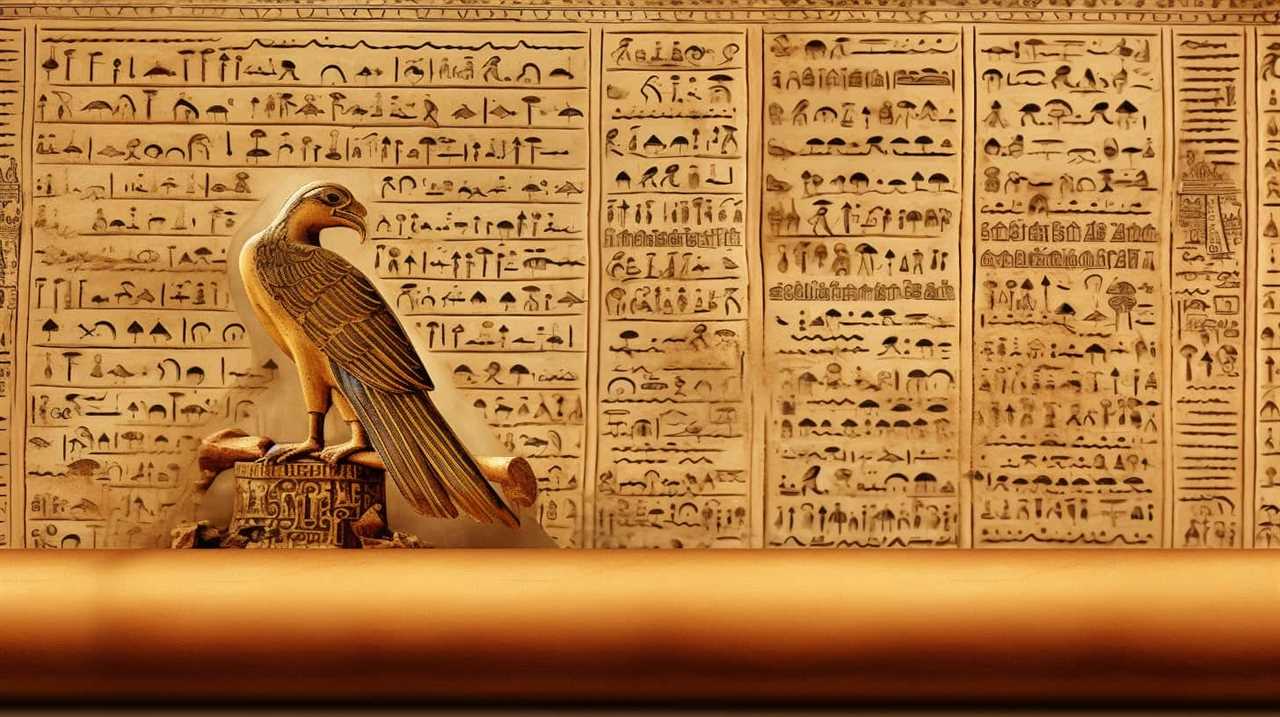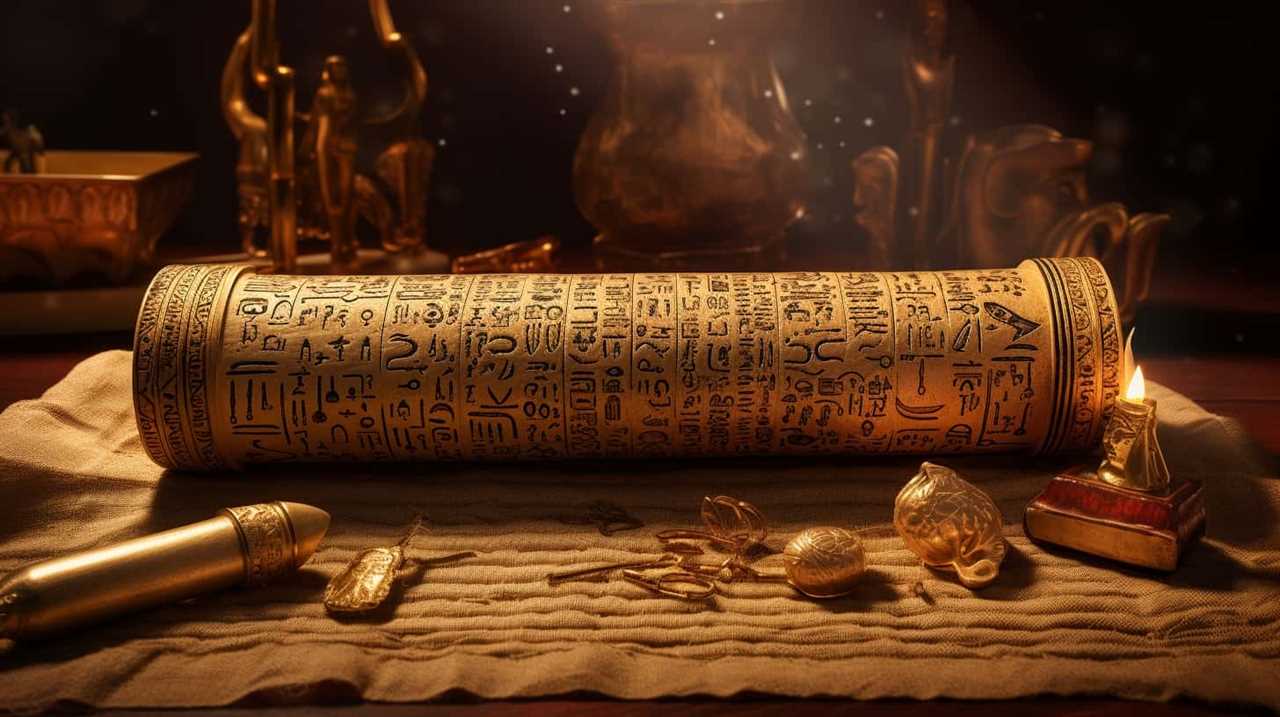Have you ever thought about how the teachings of ancient Stoicism can empower us to conquer challenges?
Well, let us delve into the depths of this timeless philosophy and unlock its secrets together.
Stoicism, a school of thought originating in ancient Greece, offers profound insights on mastering the challenges that life throws our way.
Its principles, rooted in self-discipline and resilience, have guided countless individuals throughout history, and they continue to hold relevance in our modern world.

By embracing Stoic wisdom, we can cultivate inner strength, find serenity in the present moment, and navigate life’s uncertainties with grace.
So, let us embark on this journey of self-discovery, and learn how the ancient Stoics can empower us in the face of adversity.
Key Takeaways
- Stoicism teaches us to focus on what’s within our control and accept the things we can’t change, which helps us develop a sense of empowerment and agency.
- Surrendering control and embracing acceptance is crucial in times of adversity, as it reduces stress, increases adaptability, and enhances emotional well-being.
- Embracing uncertainty leads to personal growth, resilience, and the ability to find joy in the present moment.
- Cultivating inner resilience is developed through practicing Stoic principles, such as acceptance, negative visualization, and self-discipline.
Foundation of Stoic Principles
The foundation of Stoic principles shapes our understanding of how to navigate adversity with strength and resilience. Stoicism is a philosophical school of thought that originated in ancient Greece and Rome, and it offers valuable insights on cultivating resilience and adopting a stoic mindset in the face of challenges.
At its core, Stoicism teaches us to focus on what’s within our control and to accept the things we can’t change. This principle encourages us to direct our energy towards actions that can make a difference, rather than wasting it on things beyond our influence. By embracing this perspective, we develop a sense of empowerment and agency, enabling us to approach adversity with a calm and composed demeanor.

Stoicism also emphasizes the importance of self-discipline, reminding us to practice self-control and to resist the temptation of succumbing to negative emotions. By training ourselves to be mindful of our thoughts and emotions, we can cultivate resilience and develop the ability to bounce back from setbacks.
The Stoic mindset urges us to view obstacles as opportunities for growth and learning, rather than as insurmountable barriers. This perspective enables us to embrace challenges as valuable experiences that can foster personal development and sharpen our character.
Adopting a stoic mindset empowers us to face adversity head-on, with strength and resilience.
Embracing the Power of Acceptance
When it comes to dealing with adversity, embracing the power of acceptance is crucial. Surrendering control and finding peace in accepting the uncontrollable aspects of life are fundamental principles of Stoicism.

Importance of Surrendering Control
One vital aspect of building resilience in the face of adversity is embracing the power of acceptance by relinquishing control. Surrendering control may seem counterintuitive, but it’s an essential practice for developing inner strength and finding peace amidst chaos.
Here are three reasons why letting go is crucial in times of adversity:
- Reduced stress: When we try to control every aspect of our lives, we often become overwhelmed and stressed. Surrendering control allows us to let go of unnecessary burdens and focus on what truly matters.
- Increased adaptability: Adversity is inevitable, and things don’t always go as planned. By accepting that we can’t control everything, we become more adaptable and open to new possibilities.
- Enhanced emotional well-being: Letting go of control frees us from attachment to outcomes and helps us cultivate a sense of inner peace and contentment. It allows us to embrace the present moment and find gratitude in the midst of challenges.
Finding Peace in Acceptance
As we embrace the power of acceptance and surrender control, we find peace amidst adversity.
Acceptance is the key to finding solace in the face of challenges and setbacks. It’s the ability to let go of our attachment to outcomes and surrender to the present moment.

When we accept the reality of a situation, we free ourselves from the burden of resistance and open ourselves up to new possibilities. Acceptance doesn’t mean giving up or being passive; rather, it’s a powerful act of acknowledging what’s beyond our control and focusing on what we can change.
By accepting and letting go, we create space for growth and transformation.
As we transition into the next section about embracing life’s uncertainties, we’ll explore how acceptance can help us navigate the unpredictable nature of life with resilience and grace.
Embracing Life’s Uncertainties
To navigate life’s uncertainties, we must embrace the power of acceptance and lean into the unknown with courage and resilience. Finding comfort in embracing uncertainty is key to developing the strength to face life’s challenges head-on. Here are three reasons why embracing life’s uncertainties can be empowering:

- Growth: Embracing uncertainty allows us to step out of our comfort zones and experience personal growth. It pushes us to confront our fears, learn new skills, and adapt to changing circumstances.
- Resilience: Embracing uncertainty helps us develop resilience, the ability to bounce back from setbacks and persevere in the face of adversity. It teaches us to view challenges as opportunities for growth and to find strength in our ability to adapt.
- Freedom: Embracing uncertainty frees us from the need to control every aspect of our lives. It allows us to embrace the unpredictability of life and find joy in the present moment, rather than constantly worrying about the future.
Cultivating Inner Resilience
We can develop inner resilience by practicing the principles of ancient Stoicism. Cultivating inner resilience is essential for developing mental fortitude and overcoming obstacles in our lives. Stoicism teaches us that we’ve control over our thoughts, emotions, and actions, and by focusing on what’s within our control, we can build a strong foundation of inner strength.
One way to cultivate inner resilience is by embracing the concept of acceptance. Stoicism encourages us to accept the things we can’t change and to focus our energy on what we can control. By accepting the challenges and difficulties that life throws at us, we can develop the resilience needed to overcome them.
Another principle of Stoicism that helps cultivate inner resilience is the practice of negative visualization. This involves imagining the worst-case scenarios and preparing ourselves mentally for them. By doing so, we become more resilient and better equipped to handle adversity when it arises.
Furthermore, practicing self-discipline is crucial for developing inner resilience. Stoicism teaches us to be mindful of our desires and to exercise self-control over them. By practicing self-discipline, we can build resilience and strengthen our ability to overcome obstacles and setbacks.

Finding Serenity in the Present Moment
When we embrace the present moment, we can find serenity and tap into our inner power.
Stoicism teaches us the importance of living in the now, rather than dwelling on the past or worrying about the future.
Embracing Present for Serenity
In the pursuit of serenity, embracing the present moment becomes essential for finding inner peace and tranquility. In a world filled with chaos and uncertainty, it’s easy to get caught up in worries about the future or regrets about the past. However, by focusing our attention on the present moment, we can cultivate a sense of serenity that transcends the external circumstances.
Here are three ways to embrace the present for serenity:

- Practice mindfulness: By bringing our awareness to the present moment, we can observe our thoughts and emotions without judgment. This allows us to let go of worries and anxieties, and instead, fully experience the present.
- Cultivate gratitude: By acknowledging and appreciating the blessings in our lives, we shift our focus to what’s positive and good. This helps us find serenity amidst the chaos.
- Engage in self-care: Taking care of our physical, mental, and emotional well-being is crucial for finding serenity. Whether it’s through exercise, meditation, or engaging in activities that bring us joy, self-care allows us to be present and find serenity in the moment.
Power of Living Now
By fully embracing the present moment, we can tap into the power of living now and discover a profound sense of serenity and peace. Living in the present is a fundamental concept in mindfulness practice, which involves being fully aware of our thoughts, feelings, and experiences in the present moment without judgment. It allows us to let go of worries about the past or future and focus on what is happening right now. This practice enables us to cultivate a deep sense of presence, clarity, and calmness. In the table below, we can see how living in the present offers numerous benefits, including reduced stress, improved focus, and enhanced overall well-being. By incorporating this practice into our daily lives, we can harness the power of living now and experience the transformative effects it brings.
| Benefits of Living in the Present | ||
|---|---|---|
| Reduced Stress | Improved Focus | Enhanced Well-being |
Navigating Life’s Uncertainties With Stoicism
We can effectively navigate life’s uncertainties by applying stoic principles to our everyday experiences. Stoicism provides us with a practical framework for finding resilience and managing uncertainty.
Here are three ways in which stoicism can help us navigate life’s uncertainties:
- Acceptance: Stoicism teaches us to accept the things we can’t control and focus instead on what we can control. By accepting that uncertainty is a natural part of life, we can cultivate a mindset that’s resilient and adaptable.
- Mindfulness: Stoicism encourages us to live in the present moment and be mindful of our thoughts and actions. By practicing mindfulness, we can better navigate the uncertainties of life by staying grounded and focused on the present.
- Virtue-based living: Stoicism emphasizes the importance of living a virtuous life, guided by principles such as wisdom, courage, and justice. By aligning our actions with these virtues, we can navigate life’s uncertainties with integrity and purpose.
The Role of Virtue in Overcoming Adversity
When it comes to overcoming adversity, virtue plays a crucial role.

Stoicism teaches us that cultivating virtue isn’t just about being morally upright, but also about developing inner strength and resilience.
By focusing on moral excellence, we can train ourselves to face challenges with a calm and rational mindset, allowing us to navigate through adversity with grace and resilience.
In essence, virtue becomes our anchor in turbulent times, providing us with the strength and wisdom needed to overcome any obstacles that come our way.
Virtue and Resilience
In our pursuit of strength in the face of adversity, a key role is played by the virtues we cultivate. Virtue and resilience go hand in hand, as they both contribute to our ability to overcome challenges and bounce back from setbacks.

Here are three ways in which virtue can enhance our resilience:
- Mindfulness: Cultivating virtues like self-awareness and mindfulness allows us to stay present in the face of adversity, helping us to respond with clarity and intention rather than react impulsively.
- Emotional intelligence: Developing virtues such as empathy and compassion enables us to understand and regulate our emotions, allowing us to navigate difficult situations with grace and composure.
- Strength of character: Virtues like courage and perseverance provide us with the inner strength and determination to face adversity head-on, helping us to stay resilient even in the face of seemingly insurmountable challenges.
Moral Excellence and Resilience
Building upon the discussion of virtue and resilience, our journey into moral excellence and its role in overcoming adversity begins with the recognition that cultivating ethical virtues empowers us to navigate life’s challenges with integrity and wisdom.
Moral development involves the cultivation of virtues such as courage, temperance, justice, and wisdom. These virtues serve as the foundation for mental toughness, allowing us to face adversity head-on and persevere in the face of obstacles.
By cultivating moral excellence, we develop the inner strength needed to maintain our values and principles, even when faced with difficult circumstances. This inner strength becomes a guiding force, enabling us to make ethical choices and face adversity with resilience.

As we explore the concept of virtue as inner strength, we’ll delve deeper into the transformative power of Stoic philosophy and its practical applications in our daily lives.
Virtue as Inner Strength
By cultivating ethical virtues, we develop the inner strength to overcome adversity and navigate life’s challenges with integrity and wisdom. Developing character and inner strength is essential for mastering the art of resilience.
Here are three ways in which virtue serves as our inner strength:
- Courage: Cultivating courage allows us to face adversity head-on, embracing discomfort and uncertainty with grace and determination. It gives us the strength to persevere in the face of challenges, even when the path seems insurmountable.
- Temperance: Practicing temperance enables us to exercise self-control and moderation, helping us navigate difficult situations with calmness and composure. It allows us to make wise decisions, without being swayed by our emotions or external pressures.
- Wisdom: Wisdom is the culmination of our ethical virtues, guiding us to make informed choices and see the bigger picture. It helps us discern what’s truly important, enabling us to prioritize and adapt to adversity with clarity and insight.
Through the cultivation of these virtues, we develop a robust inner strength that empowers us to overcome any adversity that life throws our way.

Harnessing the Power of Mindful Perception
We can tap into the potential of our minds by cultivating the skill of actively tuning in to our perceptions. Mindfulness practices and perception techniques can help us harness the power of mindful perception, allowing us to navigate adversity with greater strength and resilience.
Mindfulness practices involve intentionally paying attention to the present moment, without judgment. By practicing mindfulness, we become aware of our thoughts, emotions, and bodily sensations, allowing us to observe them without getting caught up in them. This heightened awareness enables us to respond to challenges in a more thoughtful and deliberate manner.
Perception techniques complement mindfulness practices by helping us examine our beliefs and assumptions. By questioning our automatic interpretations of events, we can challenge negative or distorted thinking patterns that may contribute to our suffering. This process of reframing our perceptions allows us to see adversity from a different perspective, opening up new possibilities for growth and transformation.
Harnessing the power of mindful perception requires discipline and practice. It involves developing a curious and non-judgmental attitude towards our experiences, as well as cultivating the ability to step back and observe our thoughts and emotions from a distance. With time and effort, we can train our minds to respond to adversity with greater wisdom, resilience, and inner strength.

Developing Emotional Equanimity
To cultivate emotional equanimity, it’s essential for us to strive for a balanced perspective on our emotions and actively practice regulating them. Developing mindfulness allows us to observe our emotions without getting swept away by them. By cultivating present moment awareness, we create space to respond to our emotions rather than react impulsively.
Practicing emotional resilience involves acknowledging and accepting our emotions, even the uncomfortable ones. It means recognizing that emotions are natural and temporary, and that they don’t define us. We can develop emotional resilience by reframing negative emotions as opportunities for growth and learning.
In order to develop emotional equanimity, it’s important to cultivate self-awareness. This involves paying attention to our thoughts, feelings, and physical sensations without judgment. By observing our emotions with curiosity and compassion, we can gain insight into their underlying causes and choose how to respond.
Incorporating Stoic practices such as journaling and reflection can also help us develop emotional equanimity. By writing down our thoughts and emotions, we can gain clarity and perspective. Reflecting on past experiences and identifying patterns can help us better understand our emotional responses and develop strategies for managing them.

The Importance of Self-Reflection
Self-reflection plays a crucial role in developing emotional equanimity and navigating adversity with strength and resilience. Self-awareness is the foundation of personal growth and is essential for understanding our emotions, thoughts, and behaviors. It allows us to gain insight into our strengths and weaknesses, enabling us to make conscious choices and take intentional actions. Through introspection, we can examine our beliefs, values, and attitudes, uncovering any inconsistencies or limiting beliefs that may hinder our ability to face adversity.
Self-reflection provides us with the opportunity to pause, step back, and assess our reactions and responses to challenging situations. It allows us to identify patterns and triggers that may contribute to our emotional distress, enabling us to develop strategies to manage and regulate our emotions effectively. By engaging in regular self-reflection, we can cultivate emotional intelligence, which is crucial for resilience in the face of adversity.
Moreover, self-reflection enhances our ability to learn from our experiences. By reflecting on past challenges and setbacks, we can extract valuable lessons and insights, enabling us to grow and develop as individuals. It allows us to identify areas for improvement and make necessary adjustments to our thoughts, behaviors, and attitudes. Through self-reflection, we can continually refine our approach to adversity, becoming more adept at navigating life’s inevitable ups and downs.
Practicing Stoic Detachment
Continuing the discussion from the importance of self-reflection, practicing Stoic detachment allows us to cultivate a mindset of emotional resilience and inner peace in the face of adversity. Stoicism teaches us to detach ourselves from external events and focus on what we can control – our thoughts, actions, and reactions.

By practicing detachment, we can experience the following benefits of stoicism:
- Freedom from emotional turmoil: Detachment enables us to separate ourselves from the ups and downs of life, preventing us from being overwhelmed by negative emotions such as anger, fear, and sadness. Instead, we can maintain a calm and composed demeanor, regardless of the circumstances.
- Enhanced decision-making: When we detach ourselves from external outcomes, we can make decisions based on reason and virtue rather than being swayed by external pressures or desires. This allows us to make more rational and ethical choices, leading to greater long-term fulfillment and success.
- Increased resilience: By practicing detachment, we become less dependent on external factors for our well-being. We develop the ability to adapt and bounce back from setbacks, as our sense of self-worth isn’t tied to external achievements or material possessions.
In essence, practicing Stoic detachment empowers us to navigate life’s challenges with a sense of tranquility and strength. By focusing on what’s within our control and letting go of attachment to external outcomes, we can cultivate emotional resilience and inner peace.
Embracing Stoic Wisdom for Inner Peace
By embracing Stoic wisdom, we can find inner peace and tranquility in the face of adversity. Cultivating stoic wisdom for personal growth is a transformative journey that allows us to navigate life’s challenges with grace and resilience. Stoicism teaches us to focus on what’s within our control and let go of what’s not, enabling us to maintain a sense of serenity amidst chaos.
Applying stoic principles to everyday challenges allows us to view them from a different perspective. Instead of being overwhelmed by external circumstances, we learn to approach them with a calm and rational mindset. Stoicism teaches us to embrace the power of our own thoughts and emotions, recognizing that they’re under our control. By practicing detachment and reframing our mindset, we can find peace even in the most challenging situations.

Stoicism also encourages us to develop a deep understanding of ourselves and our values. By reflecting on our own actions and choices, we can align them with our principles, leading to a greater sense of inner harmony. This self-awareness allows us to navigate life with integrity and authenticity, enhancing our overall well-being.
Applying Stoic Principles to Modern Challenges
To overcome the obstacles of modern life, we must harness the power of resilience and adaptability through the application of Stoic principles. Stoicism offers valuable insights and practices that can help us navigate the complexities of our relationships and daily challenges.
Here are three ways in which we can apply Stoic principles to modern challenges:
- Acceptance and detachment: Stoicism teaches us to accept the things we can’t change and detach ourselves from outcomes beyond our control. By embracing this mindset, we can alleviate unnecessary stress and focus our energy on what’s within our sphere of influence, fostering healthier and more fulfilling relationships.
- Practicing gratitude: Stoic philosophy encourages us to cultivate gratitude for the present moment and appreciate the things we have. By adopting a grateful mindset, we can shift our perspective and find joy in the simple pleasures of daily life, enhancing our overall well-being and resilience.
- Memento mori: The Stoic practice of memento mori, reflecting on our mortality, reminds us to live each day to the fullest and prioritize what truly matters. By acknowledging the impermanence of life, we can let go of trivial concerns and invest our time and energy in meaningful pursuits, deepening our connections with others and finding greater purpose.
Frequently Asked Questions
How Can Ancient Stoicism Help Us Navigate and Overcome Adversity in Our Modern Lives?
Understanding the role of virtue in stoic resilience is crucial. By incorporating emotional intelligence, ancient stoicism helps us navigate and overcome adversity in modern lives. It offers a practical framework for developing inner strength and finding peace amidst chaos.

What Are Some Practical Steps We Can Take to Cultivate Inner Resilience and Strength?
To cultivate resilience and build inner strength, we must take practical steps. It’s like tending a garden: we nurture our minds with mindfulness, self-reflection, and gratitude. Through Stoic principles, we can weather life’s storms with grace.
How Does the Concept of Acceptance Play a Role in Stoic Philosophy and Its Approach to Adversity?
Acceptance plays a vital role in stoic philosophy and its approach to adversity. By practicing mindfulness and embracing the concept of acceptance, we can cultivate inner resilience and strength. Furthermore, the importance of virtue cannot be understated.
What Are Some Specific Ways in Which Stoicism Can Help Us Find Serenity and Peace in the Present Moment?
To find serenity and peace in the present moment, we can turn to Stoicism for guidance. By practicing mindfulness techniques and employing emotional detachment strategies, we can cultivate a sense of calm amidst life’s challenges.
How Does the Practice of Self-Reflection Contribute to Our Ability to Overcome Adversity and Find Inner Peace According to Stoic Principles?
Self-reflection, a practice central to Stoic principles, enhances our ability to overcome adversity and find inner peace. By examining our thoughts and actions, we gain insight, develop resilience, and cultivate a sense of tranquility amidst life’s challenges.

How Can Ancient Stoic Philosophy Help Build Personal Strength in Times of Adversity?
Ancient Stoic philosophy offers valuable stoic personal development insights for building personal strength in times of adversity. The teachings of stoicism emphasize resilience, self-discipline, and emotional control, helping individuals to navigate through challenges with a calm and balanced mind. Stoic principles empower people to find inner strength and peace amidst adversity.
Conclusion
In the journey of life, we often face adversities that can shake our inner peace. Stoicism, with its timeless wisdom, offers an anchor amidst the storm.
Like a lighthouse guiding ships through treacherous waters, it teaches us to embrace acceptance, cultivate resilience, and find serenity in the present moment.
By practicing stoic detachment and self-reflection, we unlock the strength within ourselves to navigate life’s uncertainties.
Through the lens of stoicism, we discover the power to face challenges with unwavering grace.

Fritz is a writer whose humor and wit infuse life into words. His creativity, combined with a profound love for the English language, makes him a unique voice at afterQuotes. Fritz’s engagement with books, culture, and social media adds depth to his contributions, making them resonate with our diverse audience.










